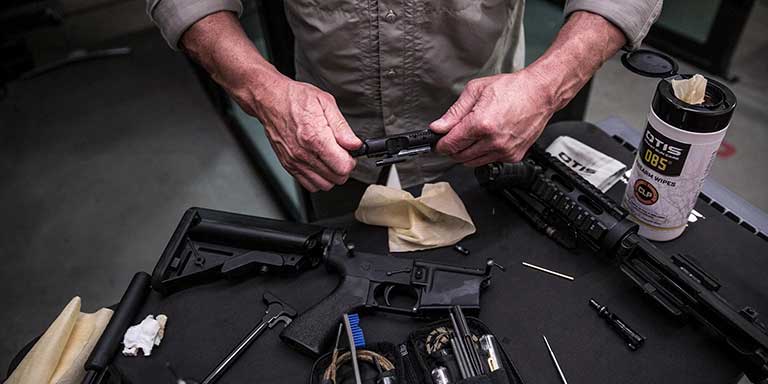Every Man Should Learn to Box
Boxing, known as the “sweet science,” is a combat sport that requires a unique combination of skill, strategy, and physical conditioning. Whether you aspire to step into the ring or simply want to improve your fitness level and self-defense abilities, learning the fundamentals of boxing is essential. This article serves as a comprehensive guide to help you understand the basics of boxing, from its history and techniques to footwork, defensive skills, and conditioning. By mastering these core principles, you will be well-equipped to embark on your boxing journey with confidence, discipline, and a solid foundation. So, tighten your gloves and get ready to delve into the world of boxing fundamentals.
Learn the Fundamentals of Boxing
What is Boxing?
Boxing is a combat sport that involves two individuals using their fists to throw punches at each other within a designated ring. Although it may sound like a recipe for a black eye and a bad hair day, boxing is a highly disciplined and strategic sport that requires skill, agility, and mental toughness.
History of Boxing
Boxing has been around for centuries, with its roots dating back to ancient civilizations such as the Greeks and Romans. However, modern boxing as we know it today started to take shape in the 18th and 19th centuries in England. Back then, it was a bare-knuckle sport without many rules, making it a far cry from the structured and regulated sport we have now. Over time, boxing evolved into a sport that captivated audiences worldwide, producing legendary fighters like Muhammad Ali, Mike Tyson, and Manny Pacquiao.
Basic Boxing Techniques
Proper Boxing Stance
Before you start throwing punches like a skilled pugilist, it’s essential to establish a solid boxing stance. Stand with your feet shoulder-width apart, with your non-dominant side (left foot for right-handed people) slightly forward. Bend your knees slightly and keep your body relaxed. This stance helps maintain balance and allows you to generate power while minimizing vulnerability.
Hand Positioning
Proper hand positioning is crucial to protect yourself while delivering effective punches. Place your dominant hand (right hand for right-handed people) near your chin as a guard, with your elbow slightly tucked in. Your non-dominant hand should be held a bit lower, ready to deliver quick jabs or hooks. Keep your hands up at all times to defend against incoming punches.
Importance of Balance and Weight Distribution
Maintaining balance and weight distribution is key in boxing. Keep your weight centered and evenly distributed between both legs, allowing you to move swiftly and change directions without losing stability. By staying balanced, you’ll be able to effectively dodge punches and counterattack with precision.
Boxing Stances and Footwork
Orthodox Stance
The orthodox stance is the most common boxing stance used by right-handed fighters. In this stance, your left foot is slightly forward, and your right foot is positioned slightly back. This positioning helps generate powerful punches from the rear hand.
Southpaw Stance
The southpaw stance is for left-handed fighters or those who prefer leading with their right hand. In this stance, your right foot is slightly forward, while your left foot is positioned back. This positioning allows for stronger jabs and hooks with the lead hand.
Footwork Drills and Exercises
Footwork is essential in boxing as it allows you to move around the ring, create angles, and maintain balance. Practice drills such as shadowboxing, ladder drills, and pivoting exercises to improve your footwork. By mastering footwork, you’ll be able to evade punches while effectively positioning yourself for powerful attacks.
Punching Techniques and Combinations
The Jab (the 1)
The jab is a quick and straight punch thrown with your lead hand. It’s often used to gauge the distance, set up combinations, or keep your opponent at bay. Think of it as the “hello” of the boxing world – a quick and friendly way to say, “I’m here, and I mean business!”
The Cross (the 2)
The cross is a powerful rear hand punch that’s delivered straight across your body, rotating your hips and shoulders for maximum power. It’s a punch that can knock your opponent’s socks off (and hopefully their equilibrium too).
The Hook (the 3)
The hook is a looping punch thrown primarily with the lead hand, targeting your opponent’s head or body from the side. It’s a sneaky little punch that can catch your opponent off guard and leave them seeing stars.
The Uppercut (the 4)
The uppercut is a short-range punch where you generate power from your legs and hips, driving your fist upward towards your opponent’s chin. It’s a punch that can make your opponent feel like they’ve just taken a ride on a rollercoaster.
The Shovel Hook or Liver Punch (the 5)
The shovel Hook is another short-range punch where you generate power from your legs and hips, its like a combination of Hook and Uppercut delivered at an angle. It’s one of the most devastating punches and can make your opponent body completely shut down and leave them helpless on the floor.
The Overhand (the 6)
The uppercut is a long-range punch that generates power from the shifting of weight from back foot to front, driving your fist in a downward arc towards your opponent’s temple. It’s a punch that when it lands can make your opponent feel like they are on rubber legs.
Combinations and their Applications
Once you’ve mastered the individual punches, the real fun begins with combinations. Combinations involve linking different punches together seamlessly, creating unpredictable and effective sequences. Combos like the jab-cross-hook or the cross-hook-uppercut can confuse and overwhelm your opponent, giving you the upper hand in the ring.
Remember, boxing isn’t just about throwing punches; it’s about strategy, skill, and sheer determination. So, get your gloves on, step into the ring, and discover the exhilarating world of boxing fundamentals.
Defensive Skills and Strategies
Boxing isn’t just about throwing punches; it’s also about avoiding them. Defensive skills are essential to protect yourself and minimize the damage you take in the ring. Let’s explore some key defensive techniques:
Slips and Rolls
Slipping and rolling are like the dance moves of boxing. They involve moving your head and body to evade incoming punches gracefully. Slipping involves moving your head to the left or right, just enough to narrowly dodge a punch. Rolling, on the other hand, requires rotating your upper body while bending at the waist to evade punches coming from different angles. Mastering these techniques will help you make your opponent miss and leave them swinging at thin air.
Blocking, Catching, and Parrying
Blocking, catching and parrying are the defensive equivalents of saying, “Not today!” to your opponent’s punches. Blocking involves using your arms to shield your head and body from incoming blows. Catching is exactly what is sounds like using the palm of your hand to catch and stop the incoming punch. Parrying, on the other hand, involves using your hands or forearms to redirect an opponent’s punch away from its intended target. These techniques offer additional layers of defense and can create openings for counterattacks.
Creating Angles and Evading Attacks
Just like playing a game of dodgeball, boxing requires evasive maneuvers and strategic footwork. Creating angles means moving around your opponent, not staying stationary like a sitting duck, enabling you to attack from unexpected directions. Additionally, footwork plays a crucial role in evading attacks. By mastering proper footwork techniques, such as pivoting, shuffling, and sidestepping, you can gracefully avoid punches while maintaining your balance and positioning.
Conditioning and Strength Training for Boxing
Boxing is a physically demanding sport that requires more than just skill. Conditioning and strength training are key to enhancing your performance and endurance inside the ring. Let’s explore some essential training aspects:
Cardiovascular Conditioning
If boxing were a song, cardiovascular conditioning would be the rhythm section. It’s all about building stamina and endurance to keep up with the fast-paced nature of the sport. Regular cardiovascular exercises such as running, skipping rope, and cycling can help improve your overall fitness and ensure you don’t run out of breath while throwing punches.
Strength Training Exercises for Boxers
Strength training is like the weightlifting equivalent of Rocky Balboa punching a slab of meat. It involves lifting weights or using resistance to build muscular strength and power. Focus on exercises that target your upper body, lower body, and core, such as push-ups, pull-ups, squats, and planks. Remember, boxing requires a well-rounded strength base, so don’t neglect any muscle group!
Core and Flexibility Training
A strong core is the secret weapon of every successful boxer. Core exercises, including sit-ups, Russian twists, and medicine ball exercises, help generate power in your punches and improve your overall stability. Additionally, flexibility training, through activities like yoga or dynamic stretching, can enhance your range of motion, making your movements more fluid and balanced.
Sparring and Practical Application
Sparring is the litmus test for your boxing skills, where you put everything you’ve learned into practice. Let’s uncover the importance of sparring and how to make the most of it:
Importance of Controlled Sparring
Sparring shouldn’t resemble an all-out brawl from a Rocky movie. It’s crucial to engage in controlled sparring sessions where you can practice your techniques against a live opponent at reduced intensity. This helps you develop timing, accuracy, and defensive skills in a realistic setting, without risking unnecessary injuries.
Applying Fundamentals in Sparring
Remember, sparring is not the time to reinvent the wheel. Instead, focus on applying the fundamentals you’ve learned during training. Use your jabs, hooks, and footwork effectively. Pay attention to defense and counterattacking opportunities. The more you practice applying your skills in sparring, the better you’ll become at executing them under pressure.
Tips for Effective Sparring Sessions
Sparring can be intense, so here are some tips to make your sessions more productive and enjoyable. First, communicate with your sparring partner to ensure you both have similar goals and expectations. Second, always wear proper protective gear, including headgear, mouthguards, and hand wraps. Lastly, learn from each sparring session by identifying areas for improvement and seeking feedback from your coach or more experienced boxers.
Tips for Improving Boxing Fundamentals
Becoming a boxing virtuoso is a journey that requires dedication and continuous improvement. Here are some tips to help you level up your boxing fundamentals:
Consistency in Training
Consistency is key! Make a commitment to regular training sessions to reinforce your skills and build muscle memory. Consistent practice allows your techniques to become second nature, helping you react instinctively during bouts.
Focus on Technique and Precision
While throwing powerful punches can be satisfying, never neglect the importance of technique and precision. Focus on executing each punch with proper form, paying attention to details such as hand placement, rotation, and weight transfer. Remember, a well-executed jab can be more effective than a wild haymaker.
Get a Professional Coach
Even Muhammad Ali had coaches, so don’t be afraid to seek professional guidance. A boxing coach can provide invaluable feedback, correct your technique, and tailor training programs to your specific needs. Their experience and knowledge will help you progress faster and avoid common pitfalls.
So, whether you’re a beginner stepping into the ring for the first time or a seasoned boxer looking to refine your skills, mastering these fundamentals will set you on the path to pugilistic greatness. Remember, boxing is as much an art as it is a sport, so keep practicing, stay dedicated, and most importantly, have fun!As you conclude your exploration of boxing fundamentals, remember that mastering this sport takes time, dedication, and practice. Continue honing your skills, refining your techniques, and pushing yourself to new limits. Whether you aim to compete in the ring or simply enjoy the physical and mental benefits of boxing, the knowledge you have gained will serve as a solid foundation for your journey. Embrace the challenge, stay committed, and let the art of boxing shape you into a stronger, more disciplined individual. Now, go forth and unleash the fighter within you!





